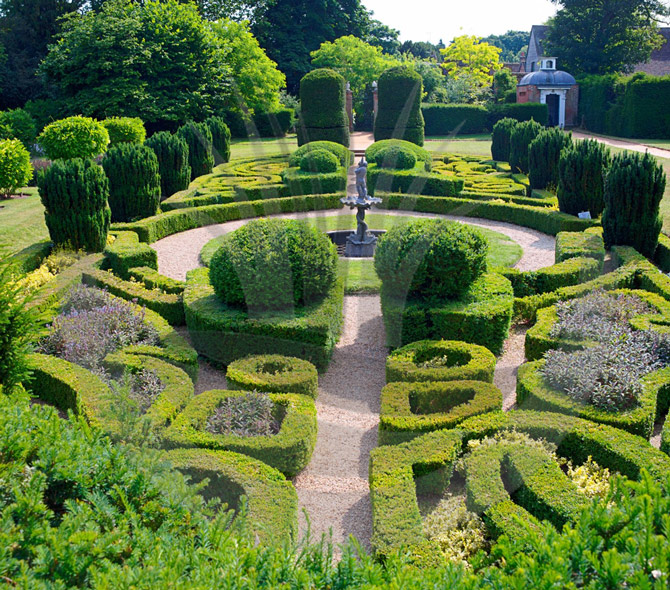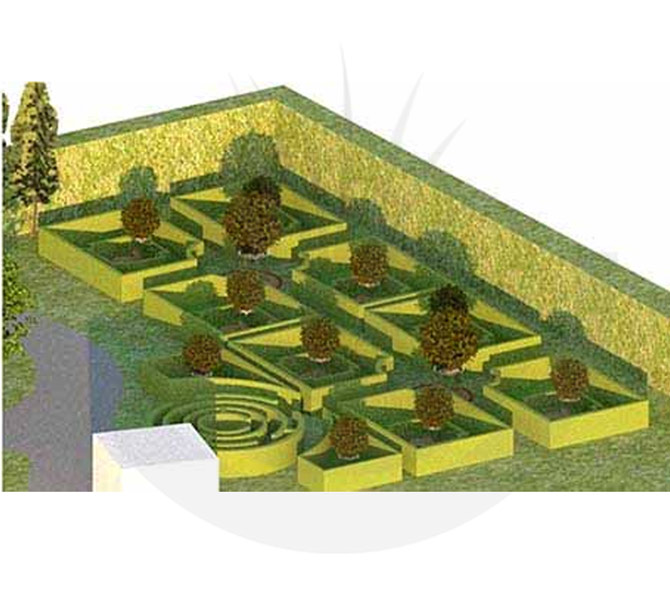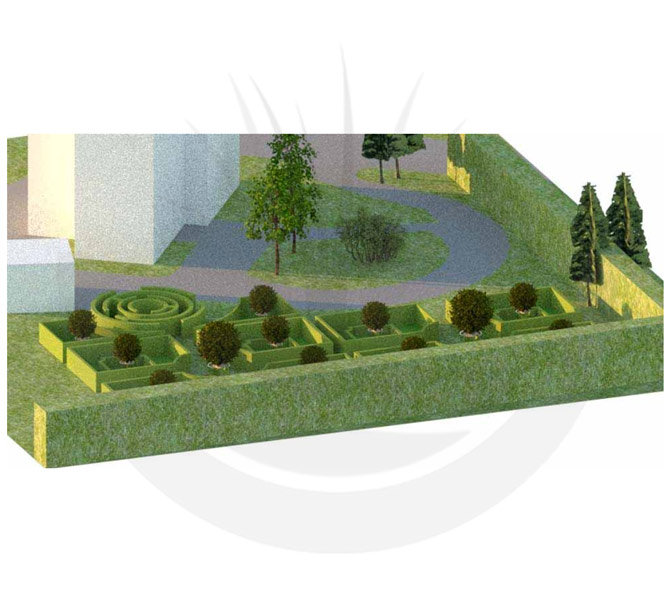
With this first article, I'll present to you some simple design ideas that can transform your green space into a garden with historical characteristics. The first type I want to give you some guidelines about is the Italian garden. This genre is important because it represents the history of gardening in our country, and it has profoundly influenced other cultures. The main features that distinguish the Italian garden are the geometric division of spaces, achieved with the help of trees and hedges, the vegetal sculptures obtained through pruning, and the geometric water features. So, to reproduce, on a smaller scale, a space like this, you can:
Below you can see the example design views



The project was developed following the above-mentioned guidelines and taking into account the available space. Given the large area, it was possible to include a maze in front of the house as an entrance to the garden; the hedges were placed in those dimensions, approximately 10x7m, to create and maintain symmetry and harmony; finally, the focal points, in this case, vases and ball-shaped boxwood, were regularly repeated in every empty space.
It was developed only in the empty part of the area, as the other parts of the property were already covered with vegetation and furnishings. In this case, it will be sufficient to fix the paving of the path and add new plant species inside the vases.

The Importance of Green Spaces
I would like to take a moment to discuss the importance of gardens and green spaces in all environments, not just in private areas but also in public city spaces.
Certainly, the first role that these spaces play, which we are all aware of, is the aesthetic-landscape role: trees and greenery should be an integral part of home design. The tree should be considered as an “architectural element” that can create privacy, enhance the landscape, hide unpleasant views, accentuate the lines of your home, or soften its harshness.
The most important role that green areas play is the ecological role: they purify the air from dust and gases, allowing us to breathe cleaner air.
They also serve a hygienic, recreational, and social role: parks and gardens located near homes or offices reduce the sense of heaviness imposed by urban life; in green spaces, you can breathe clean air, relax, socialize, and unwind, thus healing both body and mind.
Finally, gardens and trees have an economic role: having trees near the house allows for energy savings, reducing air conditioning and heating costs; additionally, if you ever want to sell your house, the presence of a well-maintained garden will substantially increase its value.
So, if you have a green space in your home, be proud and take care to preserve and enrich it with nature. If you don't have a garden but have a terrace, that's fine too; you can create a green corner that will still provide benefits.
Well said, Elisa, how can one disagree with your point?
In your next article, though, remember to mention those beautiful terracotta containers that are so
beneficial to the roots of plants
and also add a touch of color and class to the entire setting...

